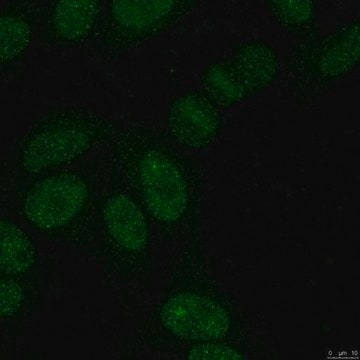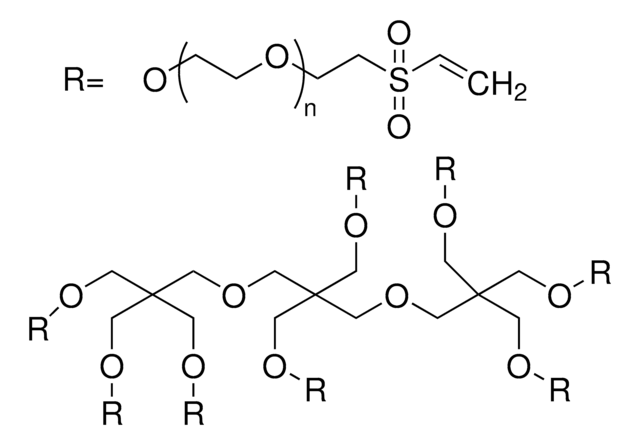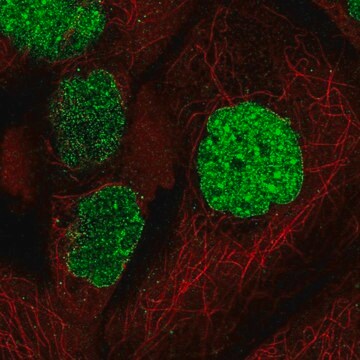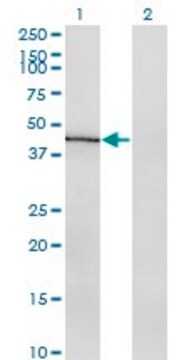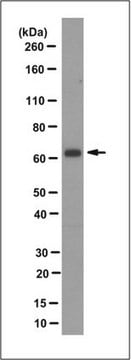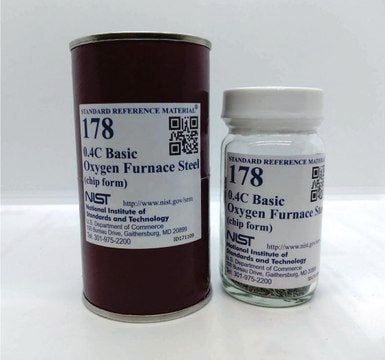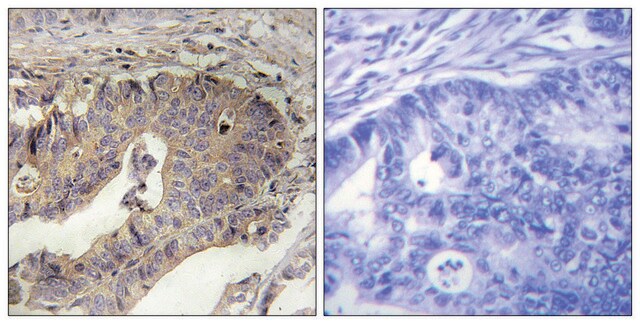MABS1139
Anti-SUMO2/3 Antibody, clone 3H12
clone 3H12, from rat
Synonyme(s) :
Small ubiquitin-related modifier 2, HSMT3, Sentrin-2, SMT3 homolog 2, Smt3B, SUMO-2, Ubiquitin-like protein SMT3B, Small ubiquitin-related modifier 3, SMT3 homolog 1, Smt3A, SUMO-3, Ubiquitin-like protein SMT3A
About This Item
Produits recommandés
Source biologique
rat
Niveau de qualité
Forme d'anticorps
unpurified
Type de produit anticorps
primary antibodies
Clone
3H12, monoclonal
Espèces réactives
mouse, human, rat
Technique(s)
immunocytochemistry: suitable
western blot: suitable
Isotype
IgG2aκ
Conditions d'expédition
dry ice
Modification post-traductionnelle de la cible
unmodified
Informations sur le gène
human ... SUMO2(6613)
Description générale
Spécificité
Immunogène
Application
Immunocytochemistry Analysis: 10 µg/mL of purified clone 3H12 detected SUMO2/3 immunoreactivity in primary mouse neural progenitor cells (Courtesy of Taro Tachibana, Ph.D., Osaka City University, Japan).
Western Blotting Analysis: 1 µg/mL of purified clone 3H12 detected SUMOylated proteins in HeLa cell lysate (Courtesy of Taro Tachibana, Ph.D., Osaka City University, Japan).
Immunocytochemistry Analysis: A representative lot detected SUMO-2/3 nuclear immunoreactive foci co-localized with those of MCAF1 and SUMO1 and enriched in heterochromatin proteins by indirect immunofluorescent staining of exponentially growing C-33A cells fixed with 4% paraformaldehyde and permeabilized by 0.2% Triton X-100. Trasfecting C-33A cells with SUMO2/3 shRNA or Discosoma sp. red fluorescent protein (DsRed) fusion containg SUMO2/3-interacting sequence (MCAF1 a.a. 965-975) abolished nuclear staining by clone 3H12 (Uchimura, Y., et al. (2006). J. Biol. Chem. 281(32):23180-23190).
Signaling
Qualité
Western Blotting Analysis: A 1:500 dilution of this hybridoma culture supernatant detected SUMO2/3-modified (SUMOylated) proteins in 10 µg of HeLa cell lysate.
Description de la cible
Forme physique
Stockage et stabilité
Handling Recommendations: Upon receipt and prior to removing the cap, centrifuge the vial and gently mix the solution. Aliquot into microcentrifuge tubes and store at -20°C. Avoid repeated freeze/thaw cycles, which may damage IgG and affect product performance.
Autres remarques
Clause de non-responsabilité
Not finding the right product?
Try our Outil de sélection de produits.
Code de la classe de stockage
10 - Combustible liquids
Classe de danger pour l'eau (WGK)
WGK 2
Certificats d'analyse (COA)
Recherchez un Certificats d'analyse (COA) en saisissant le numéro de lot du produit. Les numéros de lot figurent sur l'étiquette du produit après les mots "Lot" ou "Batch".
Déjà en possession de ce produit ?
Retrouvez la documentation relative aux produits que vous avez récemment achetés dans la Bibliothèque de documents.
Notre équipe de scientifiques dispose d'une expérience dans tous les secteurs de la recherche, notamment en sciences de la vie, science des matériaux, synthèse chimique, chromatographie, analyse et dans de nombreux autres domaines..
Contacter notre Service technique